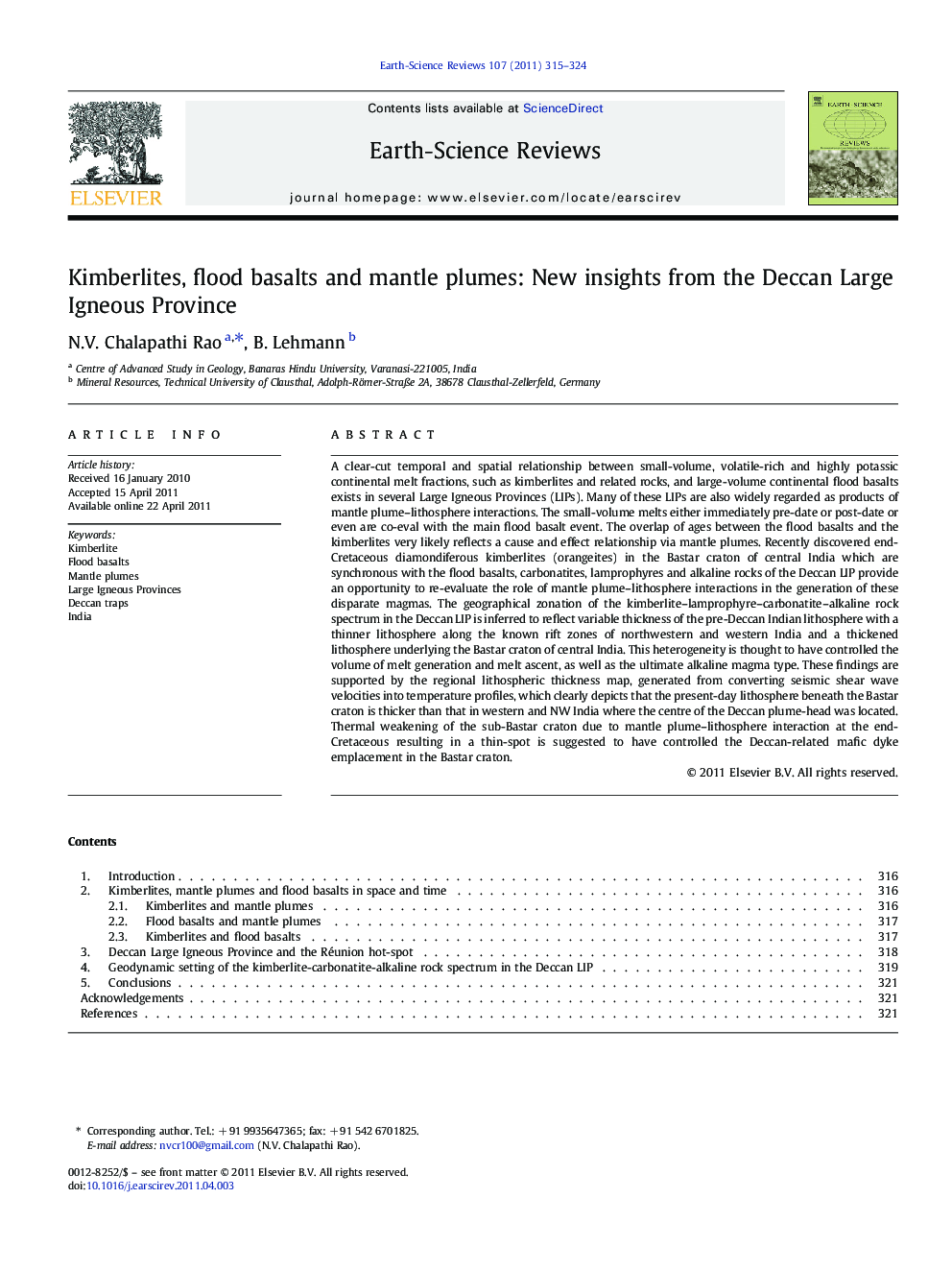| کد مقاله | کد نشریه | سال انتشار | مقاله انگلیسی | نسخه تمام متن |
|---|---|---|---|---|
| 4726034 | 1640001 | 2011 | 10 صفحه PDF | دانلود رایگان |

A clear-cut temporal and spatial relationship between small-volume, volatile-rich and highly potassic continental melt fractions, such as kimberlites and related rocks, and large-volume continental flood basalts exists in several Large Igneous Provinces (LIPs). Many of these LIPs are also widely regarded as products of mantle plume–lithosphere interactions. The small-volume melts either immediately pre-date or post-date or even are co-eval with the main flood basalt event. The overlap of ages between the flood basalts and the kimberlites very likely reflects a cause and effect relationship via mantle plumes. Recently discovered end-Cretaceous diamondiferous kimberlites (orangeites) in the Bastar craton of central India which are synchronous with the flood basalts, carbonatites, lamprophyres and alkaline rocks of the Deccan LIP provide an opportunity to re-evaluate the role of mantle plume–lithosphere interactions in the generation of these disparate magmas. The geographical zonation of the kimberlite–lamprophyre–carbonatite–alkaline rock spectrum in the Deccan LIP is inferred to reflect variable thickness of the pre-Deccan Indian lithosphere with a thinner lithosphere along the known rift zones of northwestern and western India and a thickened lithosphere underlying the Bastar craton of central India. This heterogeneity is thought to have controlled the volume of melt generation and melt ascent, as well as the ultimate alkaline magma type. These findings are supported by the regional lithospheric thickness map, generated from converting seismic shear wave velocities into temperature profiles, which clearly depicts that the present-day lithosphere beneath the Bastar craton is thicker than that in western and NW India where the centre of the Deccan plume-head was located. Thermal weakening of the sub-Bastar craton due to mantle plume–lithosphere interaction at the end-Cretaceous resulting in a thin-spot is suggested to have controlled the Deccan-related mafic dyke emplacement in the Bastar craton.
Research highlights
► A temporal and spatial relationship between small-volume magmas like kimberlites and relatively much larger volume continental flood basalts exists in several Large Igneous Provinces of the world.
► Geographical zonation of end-Cretaceous kimberlite, carbonatite, lamprophyre and other alkaline rock spectrum in the Deccan Large Igneous Province is related to interaction between Réunion mantle plume and the Indian lithosphere.
► Variable lithospheric thickness controlled the emplacement of kimberlites in a thicker Bastar craton, central India, whereas other co-eval rock spectrum is confined to thinner rift zones in western and NW India.
► These findings are supported by regional lithospheric variation map obtained from shear wave velocities.
► This study provides a compelling evidence for a link between kimberlites, flood basalts and some mantle plumes in Large Igneous Provinces.
Journal: Earth-Science Reviews - Volume 107, Issues 3–4, August 2011, Pages 315–324